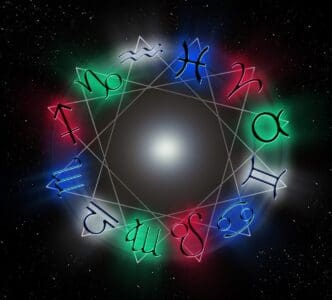In astrology, the crucial conversations between planets, known as aspects, form the dynamic core of any birth chart reading. These are the specific angular relationships—measured in degrees—that planets make to one another within the 360-degree zodiac wheel, dictating how their distinct energies cooperate, clash, or fuse together. For anyone seeking to understand their personality, challenges, and innate talents through their horoscope, aspects are the key, as they reveal the intricate script that governs the interactions between the planetary actors in their unique cosmic drama. Understanding these connections, from the challenging Square to the harmonious Trine, provides the essential context needed to transform a list of planetary placements into a living, breathing portrait of an individual’s life path and psyche.
Understanding the Language of the Planets
Think of a birth chart as a complex theatrical production. The planets are the actors, each with a distinct personality and role. The zodiac signs are the costumes and characters they play, and the astrological houses represent the different stages or areas of life where the action unfolds. In this metaphor, aspects are the script itself—the dialogue, the relationships, and the dramatic tension between the actors.
These relationships are not random; they are precise geometric angles. When two planets form an aspect, their energies are linked, creating a specific dynamic. This connection can be one of effortless support, intense friction, or a powerful fusion of purpose. Without understanding aspects, a chart reading is merely a collection of disconnected parts.
Astrologers measure these angles with a certain degree of flexibility, known as an “orb.” An orb is the allowable margin for an aspect to be considered active. For example, while a perfect Square is 90 degrees, an astrologer might consider planets that are 85 to 95 degrees apart to be in a square aspect. The smaller the orb—meaning the closer the aspect is to being exact—the more powerful and pronounced its influence will be in a person’s life.
The Major Aspects: The Core of Chart Interpretation
The most significant and powerful aspects are known as the “major” or “Ptolemaic” aspects, named after the ancient Greco-Roman astrologer Claudius Ptolemy. These five aspects form the foundational structure of any chart interpretation and describe the most critical dynamics at play.
The Conjunction (0° Aspect)
A conjunction occurs when two or more planets are in the same zodiac sign and very close to the same degree, effectively sitting on top of each other. This aspect represents a powerful fusion of planetary energies. The planets involved do not act separately; instead, their functions are permanently blended into a single, focused point of expression.
This fusion is not inherently “good” or “bad” but is always intense. For instance, a conjunction between the Sun (identity) and Mercury (communication) creates a person whose sense of self is inextricably linked to their thoughts and speech. They express themselves with clarity and conviction because their ego and their mind are one.
Conversely, a conjunction between Mars (action, aggression) and Saturn (limitation, discipline) can be challenging. This blend can create a person who is highly disciplined and capable of immense effort, but it can also manifest as frustration, where one’s drive to act feels constantly restricted or blocked.
The Sextile (60° Aspect)
The sextile is a harmonious aspect that signals opportunity and ease of communication between planets. It links planets in signs of compatible elements, such as Fire and Air, or Earth and Water. Unlike the effortless flow of a trine, a sextile is an energy that is available to be used, but it requires conscious effort to activate.
Think of a sextile as an open door. It presents a chance to build something new by combining the two planetary energies in a cooperative way. For example, a person with Venus (love, values) sextile Jupiter (expansion, wisdom) has the natural opportunity to develop a broad, optimistic, and generous philosophy on relationships. They can easily attract positive social connections, but they must choose to walk through that door and engage with others to realize the benefit.
The Square (90° Aspect)
The square is a dynamic and challenging aspect that creates friction and tension. It occurs when planets are 90 degrees apart, often in signs of incompatible elements and the same modality (e.g., a fixed fire sign and a fixed water sign). This cosmic friction is not meant to be a punishment; it is a powerful catalyst for action and growth.
Squares represent the core challenges we must work to overcome. The tension they create demands resolution, forcing us to build new skills and strengths. A person with the Moon (emotions, needs) square Saturn (duty, structure) may feel a constant conflict between their emotional needs and their responsibilities, leading to feelings of emotional restriction or loneliness. However, by working through this tension, they can develop profound emotional maturity and self-sufficiency.
The Trine (120° Aspect)
The trine is the most harmonious and fortunate of the aspects. It connects planets that are 120 degrees apart, typically in signs of the same element (e.g., all three fire signs). This creates a circuit of easy, flowing energy, indicating natural talents, innate gifts, and areas of life where things just seem to work out.
A trine represents a path of least resistance. Someone with Mercury (mind) trine Uranus (innovation) may be a naturally brilliant and original thinker, effortlessly generating groundbreaking ideas. The only potential pitfall of a trine is that the gifts it bestows can be taken for granted. Because the energy flows so easily, it might not be developed to its full potential, sometimes leading to complacency.
The Opposition (180° Aspect)
An opposition places two planets on opposite sides of the zodiac, 180 degrees apart. This creates a dynamic of polarity and confrontation. The two planetary energies are in a cosmic tug-of-war, pulling in completely different directions. The primary theme of an opposition is awareness and integration.
This aspect often plays out in our relationships with others, as we tend to “project” one side of the opposition onto other people. For example, a Mars (self-assertion) opposition Neptune (selflessness, fantasy) can create a conflict between taking direct action for oneself and dissolving into the needs of others. The goal is to find a balance, learning to integrate both drives rather than choosing one over the other. Oppositions, when mastered, lead to objectivity, balance, and a more complete perspective.
Digging Deeper: The Minor Aspects
While the major aspects form the skeleton of a chart, the minor aspects add flesh, nuance, and subtle detail. They point to less obvious psychological patterns and developmental tasks.
The Quincunx or Inconjunct (150° Aspect)
The quincunx is a quirky and awkward aspect that links planets in signs that have absolutely nothing in common—different elements and different modalities. This creates a persistent sense of friction and the need for constant adjustment. The two energies are misaligned and struggle to understand each other.
This aspect often manifests as a health issue or a nagging psychological complex that requires ongoing attention. For instance, a Sun (identity) quincunx Pluto (power, transformation) might create a person who feels they must constantly adjust their sense of self to deal with intense power dynamics or crises, never feeling fully integrated or at ease.
The Semi-Sextile (30°) and Semi-Square (45°)
The semi-sextile (30°) links adjacent zodiac signs. While it’s considered a “soft” aspect, it carries a low-grade friction, representing a small developmental step that must be taken to link two very different energies. The semi-square (45°) is a minor “hard” aspect that creates persistent irritation or stress, like a rock in your shoe. It drives awareness through low-level, chronic frustration.
How to Use Aspects in Your Own Chart
When you generate a birth chart online, you will typically see a web of colored lines in the center of the chart wheel. These lines represent the aspects. Red lines often indicate “hard” or challenging aspects like squares and oppositions, while blue lines denote “soft” or harmonious ones like trines and sextiles. Most chart generators also include an aspect grid that lists all the connections systematically.
Beyond individual aspects, look for aspect patterns. A “T-Square,” involving an opposition and two squares, points to a major life challenge and a powerful point of resolution. A “Grand Trine,” a triangle of three trines, indicates a significant area of natural talent and flow. Understanding these patterns reveals the overarching story of your chart.
Finally, the concept of aspects is the engine behind predictive astrology and daily horoscopes. As planets move through the sky, they form “transiting” aspects to the planets in your birth chart. A transiting Jupiter trine your natal Sun can bring a period of luck and confidence, while a transiting Saturn square your natal Moon can signal a time of emotional challenge and maturation.
Ultimately, the aspects in your birth chart are a map of your internal wiring. They show where your energy flows with ease and where it meets with tension that demands growth. Far from being deterministic, these cosmic conversations are a guide. The challenging aspects are not curses but invitations to build strength, and the harmonious aspects are not guarantees of success but gifts to be consciously unwrapped and utilized. By learning their language, you gain a powerful tool for navigating your life with greater self-awareness and purpose.








